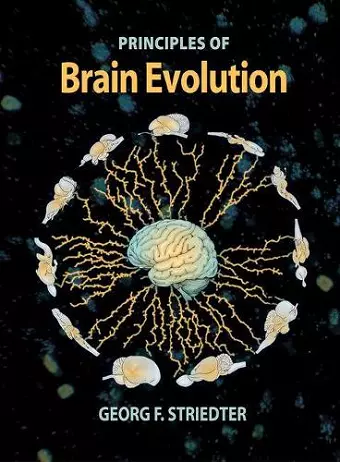Brain Evolution
Format:Hardback
Publisher:Oxford University Press Inc
Published:29th Nov '04
Currently unavailable, and unfortunately no date known when it will be back

Brain Evolution is a complex weave of species similarities and differences, bound by diverse rules or principles. This book is a detailed examination of these principles, using data from a wide array of vertebrates but minimizing technical details and terminology. It is written for advanced undergraduates, graduate students, and more senior scientists who already know something about 'the brain,' but want a deeper understanding of how diverse brains evolved.
The book opens with a brief history of evolutionary neuroscience, then introduces the various groups of vertebrates and their major brain regions. The core of the text explores: what aspects of brain organization are conserved across the vertebrates; how brains and bodies changed in size as vertebrates evolved; how individual brain regions tend to increase or decrease in size; how regions can become structurally more (or less) complex; and how neuronal circuitry evolves. A central theme emerges from these chapters-that evolutionary changes in brain size tend to correlate with many other aspects of brain structure and function, including the proportional size of individual brain regions, their complexity, and their neuronal connections. To explain these correlations, the book delves into rules of brain development and asks how changes in brain structure impact function and behaviour. The final two chapters demonstrate the application of these rules, focusing on how mammal brains diverged from other brains and how Homo sapiens evolved a very large and 'special' brain.
This text will surely supersede its stated goal, to pique the interest in brain evolution of advanced undergraduate and graduate students. From the very beginning, with the fascinating example of Bumpus' sparrows of 1898, we know this book will be more witty and lively than most on this topic. Throughout the remaining text, Striedter succeeds repeatedly by explicating the main principles of brain evolution without encyclopedic or dry detail. As a result of this new text, we can certainly anticipate that young students of evolutionary neuroscience will be enticed to address questions that currently lack much empirical data." * David C. Airey, Genes, Brain and Behavior *
This volume offers an enduring and succinct summary of the vast archive of morphological data that reveals the wondrous diversity of brains." * Robert W. Doty, The Quarterly Review of Biology *
Georg Striedter has produced a wonderful book that discusses current understandings of brain evolution. Overall, this is a volume that most neuroscientists will enjoy reading, and some of them, myself included, will find it useful as a textbook for graduate students and advanced undergraduates." * Jon H. Kaas, Nature Neuroscience *
In Principles of Brain Evolution, Striedter accomplishes several important goals: he conveys the many aspects of brain structure and function that are conserved across species; he illustrates in a clear manner why species differences are real and should not be dismissed; he explores the complex issue as to how conservation and divergence * noted at various levels of neural organizationrelate to one another; and finally, he hypothesizes as to how the rules of brain development have consequences for how the brains evolve. Astonishingly, Striedter accomplishes these goals in some 360 pages of text! I highly recommend this book." C. A. Morgan, III, M.D., M.A., Yale Journal of Biology and Medicine *
ISBN: 9780878938209
Dimensions: unknown
Weight: unknown
350 pages